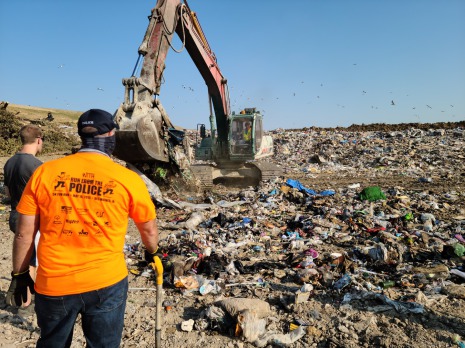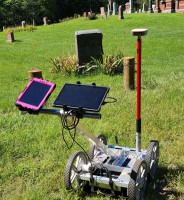
We can provide handler/canine teams for urgent search & rescue situations
We have spent decades honing our skills looking for people who have gone missing because of homicide, abduction, suicide, dementia, and those who simply had some bad luck in the outdoors. We have had hundreds of hours of training and have responded to and managed some of the largest missing person situations in the Midwest.
Our handler/canine teams are trained for:
- Tracking/trailing
- Area search
- Human remains detection
Our dogs meet or exceed the standards put forth by the National Association of Search and Rescue (NASAR) and/or the Scientific Working Group on Dog and Orthogonal Detector Guidelines (SWGDOG).
Cold-case/Missing Person Recovery
We can provide you with trained and experienced search managers who specialize in the planning and resolution of cold-case/missing persons situations. We will work with your investigators to plan and execute strategic field searches.
Our canines have experience locating the odor of human remains decomposition that is only a few hours old to hundreds or thousands of years old. Scientific research has identified nearly 500 volatile organic compounds related to human decomposition (A. Vaas et al 2008, Carabello 2014).
We have worked on missing person cases that were only hours old to 45 years old. The dogs have located evidence like drops of human blood and bone fragments in large open areas, and molecules of fresh decomposition odor emitting from closed vehicles.
Stages of vertebrate decomposition in outdoor terrestrial environments
Stage Description Insect activity Odor evolution
Fresh First hours following death Initial attraction of flies to carcass Minimal perceived odor
Onset of autolysis Oviposition in body orifices
Rigor mortis, livor mortis,
algor mortis
Bloat Onset of putrefaction Continued attraction and oviposition Strong odor, typically Gas accumulation due to Development of fly larvae and initial perceived as containing microorganisms and macro- larval masses formed sulfur compounds,
molecule breakdown methane, and ammonia
Active Deflation of the body Active consumption of tissue Strong and complex
Decay High rate of tissue removal by matured insect larvae odor comprising a wide
by microorganisms, insect array of compounds
activity, and macromolecule
breakdown
Advanced Reduction in moisture Reduced insect activity and Reduction in perceived
Decay Some remaining tissue migration of fly larvae region odor but still present and
typically in torso Colonization by beetles complex
Dry Hair, cartilage and bone Minimal fly and beetle activity Reduced odor, perceived
Remains remains, mineral degradation Regular assemblage re-established mostly from surrounding soils F. Verheggen et al., BioScience 67: 600–613
Ground Penetrating Radar
When the dogs locate the odor of human remains decomposition we can apply our ground penetrating radar unit to scan the sub-surface soil in the area to assess for possible buried remains. This combination of the dog's nose and the radar technology can provide timely information to law enforcement to support the decision to dig or not to dig at that location. NOTE; It is important to understand that if human remains have been moved from the area the decomposition odor can remain in the soil in that location for decades or even much longer. In fact, the molecules that make up those volatile organic compounds can move hundreds of yards in the sub-surface moisture and can be pulled into the root systems of neighboring vegetation.


